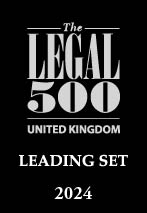We are all used to the one blow which results in the victim falling backwards and striking his/her head and dying.
Richard Barraclough KC who has an extensive civil and criminal practice involving death and catastrophic injury was instructed by the Crown Prosecution Service to prosecute a 34 year old defendant who on 28/12/18 killed his 36 year old brother in tragic circumstances. The defendant inflicted some two or three blows onto his brother, for no obvious reason and which unexpectedly resulted in death, probably because the deceased was so intoxicated that when struck, his head unusually and unexpectedly twisted resulting in traumatic subarachnoid brain haemorrhage.
The defendant had gone out with his brother, their father and friends for what was described as a belated “Christmas do”. They ate a meal together and then consumed much alcohol. When they left to go home in a mini bus they were in good humour. One witness described how on a scale of 1-10 the two brothers were 8 out of 10.
Suddenly and for no obvious reason save that there had been a minor disagreement between the brothers in the restaurant, the defendant started an “abusive tirade” towards the deceased; he started punching his brother downwards towards the head. The defendant was to admit striking his brother some two or three times.
The deceased slumped over and died almost immediately despite every effort to revive him. The defendant was distraught. His remorse was immediate and dramatic. He could not believe that he had injured let alone killed his brother.
The brothers were very close as was the entire family.
Post mortem blood was analysed and found to contain alcohol at a concentration of 232mg/100ml of blood. In the urine, alcohol was detected at a concentration of 313mg/100 ml. This blood alcohol concentration was likely to produce a high degree of intoxication in an average social drinker although a habitual drinker may appear less affected.
On internal examination there was a small bruise overlying the left vertebral artery at the base of the skull. Examination of the vertebral arteries within the skull showed a complete tear of the left vertebral artery from the junction with the basilar artery.
The brain examination disclosed features of traumatic basal subarachnoid haemorrhage supported by the presence of the traumatic tear to the wall of the extracranial portion of the left vertebral artery and was in keeping with the site of bruising behind the left ear. Death resulted from traumatic subarachnoid haemorrhage.
There was bleeding in the lower left occipital scalp and related part of the upper left sternomastoid muscle above and behind the left ear. In the opinion of the pathologist this was consistent with a blow or blows to this region of the head and is in a very typical location for impact trauma leading to traumatic subarachnoid haemorrhage.
This type of traumatic basal subarachnoid haemorrhage commonly presents with immediate collapse and cardiac arrest which is believed to be due either to direct trauma or sudden and unexpected twisting of the head and neck regions resulting in strain on the structures in the brain stem, particularly the medulla where the cardiorespiratory centre is located and bleeding into the subarachnoid space at the base of the brain.
It is thought that traumatic subarachnoid haemorrhage is caused by twisting of the head on the neck leading to vertebral or other intracranial vessel injury, bleeding into the subarachnoid space and possible interference with the brain stem vital centres.
Traumatic subarachnoid haemorrhage is usually associated with alcohol intoxication of the victim. In this case the deceased was significantly intoxicated. The explanation for the association with alcohol may be that intoxication allows more extreme movement of the head on the neck following impact and there may be a lack of anticipation of the blows or blow causing the injury.
The defendant was charged with murder but after the post mortem and examination of the brain the Prosecution accepted the defendant’s plea of guilty to manslaughter. The sentencing judge imposed a sentence of 4 years imprisonment giving full credit for the plea. Following a trial she would have imposed a sentence of 6 years. She applied the Sentencing Guidelines for manslaughter and in particular category C culpability where death is caused in the course of an unlawful act which involved an intention to cause harm (or recklessness as to whether harm would be caused) that falls between high and lower culpability. She considered that alcohol released the defendant’s inhibitions resulting in the attack taking into account the fact that he had no previous convictions, his remorse, a lack of premeditation, positive evidence of good character and his plea of guilty.
This case is an example of how intoxication can result in an attack for no rational reason even on one who is loved by the assailant and a completely unexpected death caused by the deceased’s own intoxication.



